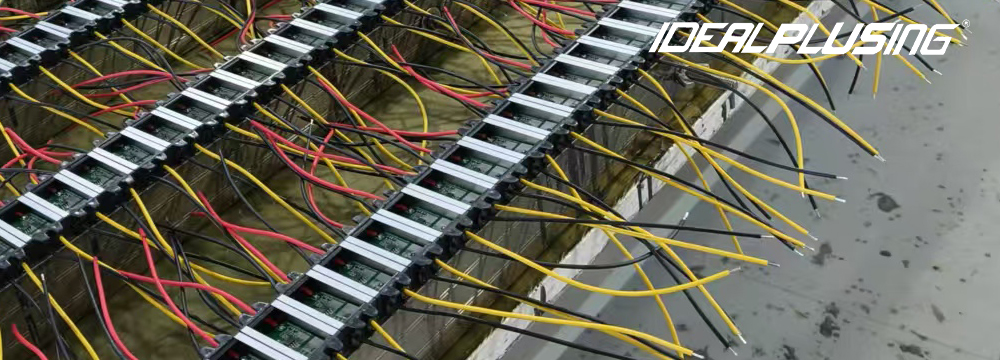As the name implies, the dcdc power module is both a dcdc power supply and a module. This modular power supply is a power converter that can be directly soldered on a circuit board.
It mainly provides power for application-specific integrated circuits (ASICs), digital signal processors (DSPs), microprocessors, memories, field programmable gate arrays (FPGAs) and other digital or analog loads. Generally speaking, this type of module is called a point-of-load (POL) power supply system or a point-of-use power supply system (PUPS).
Due to the many advantages of the modular structure, modular power supplies are widely used in communication fields such as switching equipment, access equipment, mobile communications, microwave communications, optical transmission, routers, and automotive electronics, aerospace, etc.

Power supply classification
Switching power supply is a power supply that uses modern power electronics technology to control the time ratio of the switch on and off to maintain a stable output voltage. The switching power supply is generally composed of a pulse width modulation (PWM) control IC and a MOSFET.
Switching power supply products are widely used in industrial automation control, military equipment, scientific research equipment, LED lighting, industrial control equipment, communication equipment, power equipment, instrumentation, medical equipment, semiconductor refrigeration and heating, and other fields. There are two types of switching power supplies according to the input voltage: one is a DC switching power supply; the other is an AC switching power supply.
The DC switching power supply is mainly introduced, whose function is to convert the original ecological power supply (coarse power) with poor power quality, such as the mains power supply or the battery power supply, into a DC voltage (fine power) with higher quality that meets the requirements of the equipment.
The core of the DC switching power supply is the dc dc voltage regulator. Therefore, the classification of DC switching power supplies depends on the classification of DC/DC converters. In other words, the classification of DC switching power supplies is basically the same as the classification of DC/DC converters, and the classification of DC/DC converters is basically the classification of DC switching power supplies.
Isolated vs. Non-Isolated DC Converters
DC/DC voltage regulator can be divided into two categories according to whether there is electrical isolation between the input and output: one is isolated, called an isolated DC/DC converter; the other is non-isolated, called a non-isolated DC/DC converter.
Isolated DC/DC converters can also be classified according to the number of active power devices. There are two types of single-tube dc/dc converters: forward and flyback.
There are four types of dual-tube dc/dc converters: double-transistor forward converter, double-transistor flyback converter, push-pull converter and half-bridge converter. A four-tube dc/dc converter is a full-bridge dc/dc converter.
Non-isolated dc/dc converters can be divided into three categories: single-tube, double-tube and quad-tube according to the number of active power devices.
There are six types of single-tube dc/dc converters, namely buck, boost, buck boost, Cuk, Zeta and SEPIC. Among these six single-tube dc/dc converters, Buck and Boost dc/dc converters are basic, and Buck-Boost, Cuk, Zeta, and SEPIC dc/dc converters are derived from them.
The dual-tube dc/dc converter has a dual-tube series-connected boost (Buck-Boost) dc/dc converter. The four-tube dc/dc converter is commonly used with a full-bridge dc/dc converter (Full-Bridge Converter).
When the isolated dc/dc converter realizes the electrical isolation between the output and the input, a transformer is usually used to achieve it.
Since the transformer has the function of voltage transformation, it is conducive to expanding the output application range of the converter, and it is also convenient to realize multiple outputs of different voltages, or multiple outputs of the same voltage.
When the voltage and current ratings of the power switch tube are the same, the output power of the converter is usually proportional to the number of switch tubes used. Therefore, the more switch tubes there are, the greater the output power of the dc/dc converter.
The output power of the four-tube type is twice that of the two-tube type, and the output power of the single-tube type is only 1/4 of the four-tube type.
The combination of non-isolated converter and isolated converter can obtain some characteristics that a single converter does not have.
Summarize
In general, it can be understood that the power supply of DC/DC/converter dc/dc converter to DC includes the dcdc power supply module mentioned above, and also includes various other packaging forms of dcdc power supply, such as wiring type, plug type, etc. The dcdc power supply module is what we call a relatively small power module power supply welded on a circuit board.







